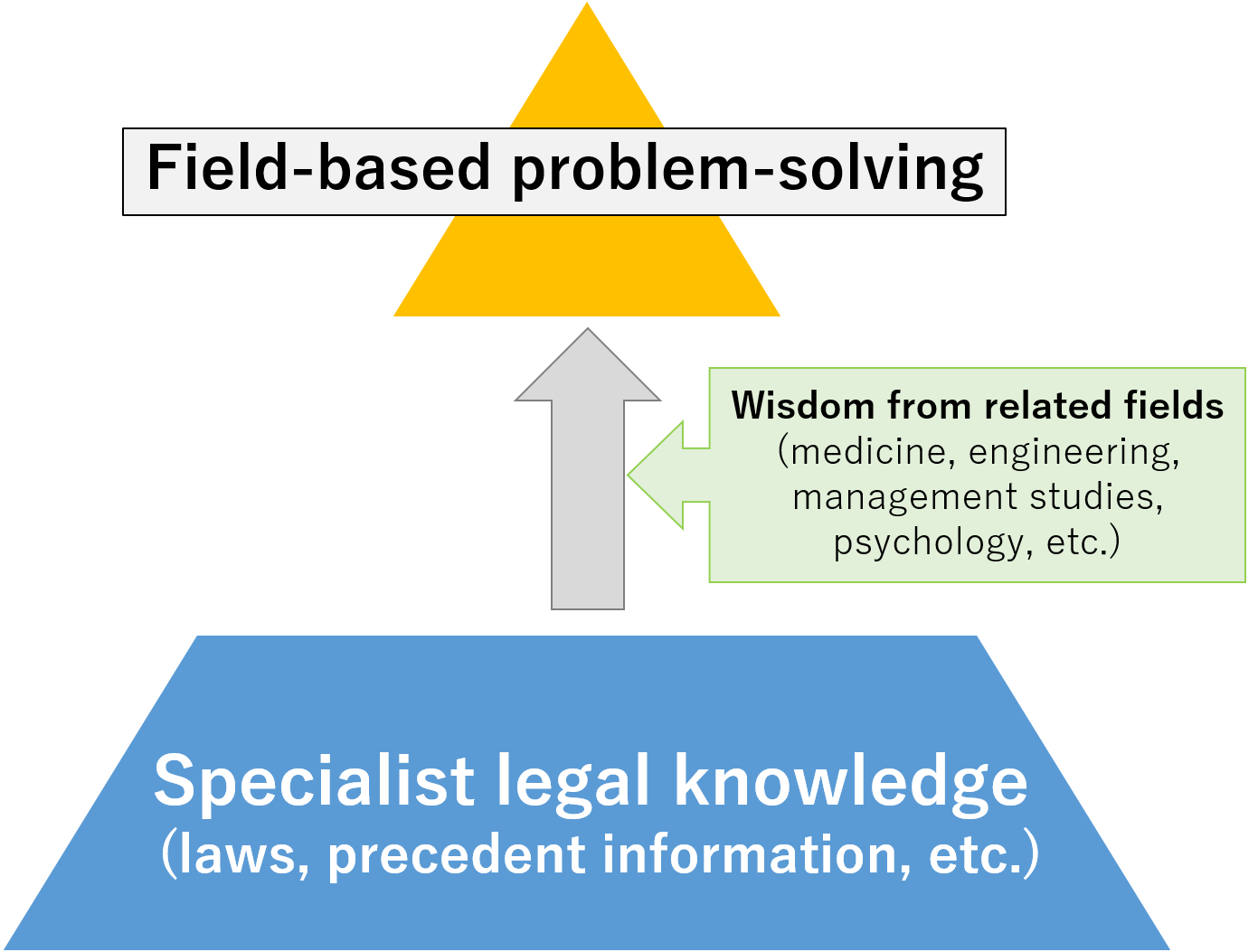Area of specialty
(1) Basic framework of activities
The greatest characteristic of this association is the orientation towards problem-solving and prevention. Conventionally, laws have been oriented towards resolving disputes that have already occurred. By having its foundation based on the knowledge that is cultivated in such a manner, the Japan Association of Occupational Health Law (JAOHL) combines knowledge from various related fields and seeks to resolve and prevent legal issues concerning work health and safety. We welcome everything from latest academic research to practical debates concerning the challenges in the field. In our educational activities, we emphasize the practical legal education of occupational health professionals, such as industrial physicians (Figure 1).

Fig. 1. Basic framework of JAOHL activities
(2) Area of specialty aimed toward “field-based problem-solving”
Our area of specialty is aimed toward field-based problem-solving, which can be organized as shown in Figure 2. While the horizontal axis represents time, the vertical axis represents perspective, creating the following four quadrants.
(1) Macro-level × prevention
How should legal systems be created to prevent work health and safety problems from occurring?
cf. proposals for work health and safety legislation, etc.
For example, how should the work health and safety of freelancers and teleworkers be regulated, and how should the handling of chemicals with unknown toxicity be regulated.
(2) Macro-level × ex post facto resolution
How should the legal systems and laws at the national level be created to resolve the work health and safety problem?
cf. how should the industrial accident compensation systems work, how should the industrial accident compensation be wound up, etc.
For example, how should the findings of industrial accidents be made for chemical hypersensitivity or hepatitis when the effects of overconsumption of alcohol during work are suspected, and how should the decision to discontinue industrial accident compensation be made in the case of mental disorders, which can last over long terms.
(3) Micro-level × prevention
How should the company rules and systems be created to prevent work health and safety problems from occurring?
cf. the state of company rules and systems that are useful for prevention, etc.
For example, if there are useful examples of decreases in the number of unwell people or trouble through the preparation of new health management regulations, there must be an analysis of their factors and whether they can be expanded.
(4) Micro-level × ex post facto resolution
In order to resolve the work health and safety problems after the fact, how should individual methods and laws be created when the parties go to court?
cf. know-how about out-of-court dispute resolution, theories of appropriate compensation, etc.
For example, if there are strategies that have contributed towards the prevention of disputes at an early stage, when employees suffer unclear health disorders outside work, there must be an analysis of their factors and whether they can be expanded.

Fig. 2. Organization of field-based problem-solving
The issues that this Association will tackle for the time being
(1)Legal system that encourages collaborative work health and safety by various stakeholders
(2)Diverse and dense work destinations, possible health problems and legal regulations
(3)Measures to ensure health and safety in response to the increase in double-employed and self-employed
(4)Future chemical substance management and the law
(5)Criteria for certifying workers’ injuries and healing of brain/heart diseases and mental disorders based on the evolution of diagnostics and pathology
(6)Scope of application of industrial accident compensation for health disorders other than brain heart disease and mental illness
(7)How to properly handle health information
(8)Appropriate return to work determination
(9)Appropriate way of dealing with employees who have problems with personality and development (including reasonable consideration) in the workplace
(10)Effective countermeasures against harassment
